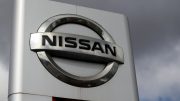Phoenix-based mining giant Freeport-McMoRan has endured a riches-to-rags turnaround. Things might stay depressed for a while longer.
Freeport-McMoRan(Photo: Courtesy of Freeport-McMoRan)
Story Highlights
Three years ago, the roughly 4-percent dividend yield paid by Freeport-McMoRan Inc. looked like a pretty good deal — and plenty safe.
As one of the world’s top producers of copper, the Phoenix-based mining giant was riding the Chinese infrastructure boom. A recently announced deal to purchase two oil and gas companies, while not embraced by Wall Street analysts, at least offered the company a means of diversifying its revenue stream.
Freeport-McMoRan’s efficient mining operations stretched from Morenci, Ariz., to Africa. The giant Grasberg complex in Indonesia, the company’s crown jewel, produced gold along with low-cost copper.
Cash flow and revenue were healthy. Freeport-McMoRan ranked as Arizona’s most profitable and valuable company — both by wide margins. And with $3.7 billion in cash at the end of 2012, the company had more than enough money to pay its $3.5 billion in long-term debt — assuming it was all coming due soon, which it wasn’t.
But ever since then, those breezy tailwinds have turned into hurricane-force headwinds, leaving some to speculate about the company’s long-term future.
And that dividend? After paying 31.25 cents a share per quarter as recently as one year ago, supplemented by occasional special dividends along the way, Freeport-McMoRan cut the payment to 5 cents a share early in 2015 before suspending it entirely in December.
Downward price spiral
For Freeport-McMoRan, the riches-to-rags turnaround was partly self-inflicted and partly the result of a vicious commodities-price cycle.
China, which in recent years has purchased about half the world’s copper, has seen its economy cool. The resulting slump in copper prices has undercut the company’s primary revenue stream.
“We expect China’s copper needs to fall in 2016 and 2017 as real estate activity fades,” wrote Morningstar analyst Daniel Rohr in a mid-January update on Freeport-McMoRan. Copper prices have tumbled from near $4.50 a pound five years ago to $2 a pound currently.
Even worse, oil prices have fallen out of bed. Freeport-McMoRan doesn’t depend as much on oil revenue, but the hydrocarbon slump began at an especially bad time — not long after the company closed on its acquisition of the two energy entities, McMoRan Exploration and Plains Exploration & Production. Those transactions, completed in mid-2013, involved the payment of $9 billion in cash and stock.
That would not have been so bad except that the parent company also incurred billions of dollars in debt as part of the deals. Long-term debt, which stood below $700 million at the end of 2006, had surged to $20.4 billion seven years later. Aggressive cost-cutting actions announced by the company since then still haven’t turned the tide.
“The foray into oil and gas constituted a big bet and materially raised the company’s indebtedness,” said Rohr.
(Freeport-McMoran and its insurance companies also paid $137.5 million to settle a class-action lawsuit over the two energy acquisitions. Among other things, the suit alleged that top company executives had conflicts of interest in pursuing the deals.)
In short, Freeport-McMoRan has had a front-row seat to the two biggest problems that are currently worrying stock-market investors — slumping oil prices and China’s slowing economy.
Five straight years of multibillion-dollar profits have morphed into four straight quarters of multibillion-dollar losses, with a fifth possible when the company issues its financial report for the fourth quarter of 2015 on Tuesday. . Much of the red ink reflects asset-impairment charges and goodwill write-downs tied to the ill-timed energy acquisitions.
“At this time, no meaningful catalyst is seen that will improve the overall market dynamics, given weak global growth rates and slowing demand in China,” wrote Carol Cowan, a senior vice president at rating agency Moody’s Investors Service, in reference to Freeport-McMoRan.
Matthew Miller, an analyst at S&P Capital IQ, considers it likely that the company will spin off its oil and gas assets or include the businesses in some type of joint venture.
John Tumazos, an investment adviser in New Jersey who follows Freeport-McMoRan, said investors shouldn’t be surprised to hear of further write-downs when the company reports on its finances Tuesday. Tumazos said he wouldn’t mind if management further scales back the oil and gas investments but doesn’t want to see those top-tier copper mines go on the auction block at depressed prices. Tumazos said his “worst nightmare” would involve Freeport-McMoRan selling its best assets at low prices, adding that it’s not clear whether the company will be able to avoid doing that.
Freeport-McMoRan could be on pace for a full-year 2015 loss around $11 billion, which wouldn’t be unprecedented — the company also lost $11 billion in 2008. The key difference now is that the company’s long-term debt is three times above where it stood back then.
Leadership changes
Meanwhile, activist investor Carl Icahn has emerged as a major shareholder at Freeport-McMoRan and a formidable force agitating for further cost reductions, including for executive pay. Two Icahn nominees recently got seats on Freeport-McMoRan’s board of directors, raising the number of directors from nine to 11. Freeport-McMoRan’s co-founder and executive chairman, James Moffett, left abruptly in late December, though he will continue on as a consultant.
“While Moffett deserves credit for several value-creating decisions during his long tenure at the company,” wrote Rohr at Morningstar, “we view his departure as favorable for shareholders.”
Just a year and a half ago, Freeport-McMoRan had a stock-market capitalization or value of around $38 billion, making it almost three times as valuable as trash-hauler Republic Services among Arizona-headquartered corporations. Now, Republic Services is the statewide leader with a capitalization almost three times that of Freeport-McMoRan, with several other Arizona companies in between.
Freeport-McMoRan’s stock price, pressured by its deteriorating financial situations, by commodity-price movements beyond the company’s control and by a recent share-issuance program designed to raise capital, has been in a tailspin. From a mid-2014 peak around $39 a share, the stock closed Friday at $3.94, down 9 percent for the day and 42 percent since the start of 2016.
The company, which employs about 8,000 people in Arizona, has been trimming its payroll.
For example, it is planning to pare the employee count at its Sierrita mine near Tucson from a current level of 1,000 to around 800. That follows roughly 300 Sierrita workers who recently accepted early retirement offers, agreed to voluntary severance, transferred to other facilities or left for other reasons.
Long-term debt ballooned to $20 billion in late 2013 and has stayed around that level, despite measures to aggressively cut expenses. An agreement with the Indonesian government that could commit the company to building a major smelter there would require additional capital demands and pressure the company’s finances further, according to Cowan at Moody’s.
Freeport-McMoRan still has solid cash flow, low-cost production and high-quality assets, especially the Grasberg mine in Indonesia. It remains a market leader in copper, while also producing gold and molybdenum. But investors won’t be heartened until the company shows some bottom-line progress and chips away at its debt. A recovery for copper and oil prices also would be highly welcome.
The company’s bonds are still rated in the low end of investment grade, but the trend has been worsening. Standard & Poor’s gives the bonds a BBB- rating, one notch above junk status, and has adjusted the outlook to negative. Fitch recently cut its rating from BBB to BBB-, with a negative outlook. Moody’s gives the bonds comparable grades in the Baa2 and Baa3 range and warns of a possible downgrade ahead.
Reach the reporter at russ.wiles@arizonarepublic.com or 602-444-8616. Reporter Ryan Randazzo contributed to this article.
Tough year for mining giant
Phoenix-based Freeport-McMoRan Inc. has had a rough time over the past 12 months. Here are some developments over that period:
Jan. 15, 2015: The company settles a class action lawsuit for $137.5 million. The suit alleged conflicts of interest by management over the company’s 2013 purchase of two oil and gas entities, Plains Exploration & Production and McMoRan Exploration, for $9 billion combined.
Jan. 27, 2015: Freeport-McMoRan reports a loss of $2.9 billion or $2.75 for the fourth quarter of 2014, before adjustments. The company realizes selling prices averaging $2.95 a pound for copper and $78.02 a barrel for oil. It announces “aggressive actions” to reduce costs and obtain third-party financing for the oil and gas operations. Company cash stands at $464 million against $19 billion in debt.
April 23, 2015: Freeport-McMoRan says it lost $2.5 billion or $2.38 a share in the first quarter before adjustments, after selling copper for an average $2.72 a pound and oil for $56.51 a barrel. Cash stands at $549 million, with debt at $20.3 billion.
April 27, 2015: The company reports 2014 pay figures showing Executive Chairman James Moffett earned $10.6 million and CEO Richard Adkerson earned $10.1 million, based on unadjusted figures reported in the standard summary compensation table.
June 23, 2015: Freeport-McMoRan Oil & Gas announces plans to raise cash by selling stock in an initial public offering or IPO.
July 23, 2015: Freeport-McMoRan reports a loss of $1.85 billion or $1.78 a share for the second quarter, with realized selling prices of $2.71 a pound for copper and $67.61 a barrel for oil. Cash stands at $466 million and debt at $20.9 billion.
Aug. 5, 2015: The company announces a major reduction in oil and gas capital spending, slicing $1.8 billion combined for 2016 and 2017.
Aug. 27, 2015: Activist investor Carl Icahn reports that he owns 8.5 percent of Freeport-McMoRan shares.
Oct. 7, 2015: The company announces that Icahn affiliates Andrew Langham and Courtney Mather have been appointed to its board.
Oct. 23, 2015: Freeport-McMoRan reports a third-quarter loss of $3.8 billion or $3.58 a share after realizing average selling prices of $2.38 a pound for copper and $55.88 a barrel for oil. Cash stands at $338 million and debt at $20.7 billion.
Dec. 9, 2015: The company suspends its common-stock dividend and cites further capital-spending reductions, cutting planned expenditures by 10 percent for 2016 and 40 percent for 2017.
Dec. 28, 2015: The company announces that Moffett, its co-founder and executive chairman, will step down with a $16-million severance payment while continuing as a paid consultant. Lead independent director Gerald J. Ford becomes chairman.
Jan. 20, 2016: The Wall Street Journal reports Indonesia’s government is studying an offer to buy 10.6 percent of Freeport-McMoRan’s mining division in the country for $1.7 billion.
2655
CONNECTTWEETLINKEDINCOMMENTEMAILMORE
Read or Share this story: http://azc.cc/1VhuisN
Source: www.azcentral.com




